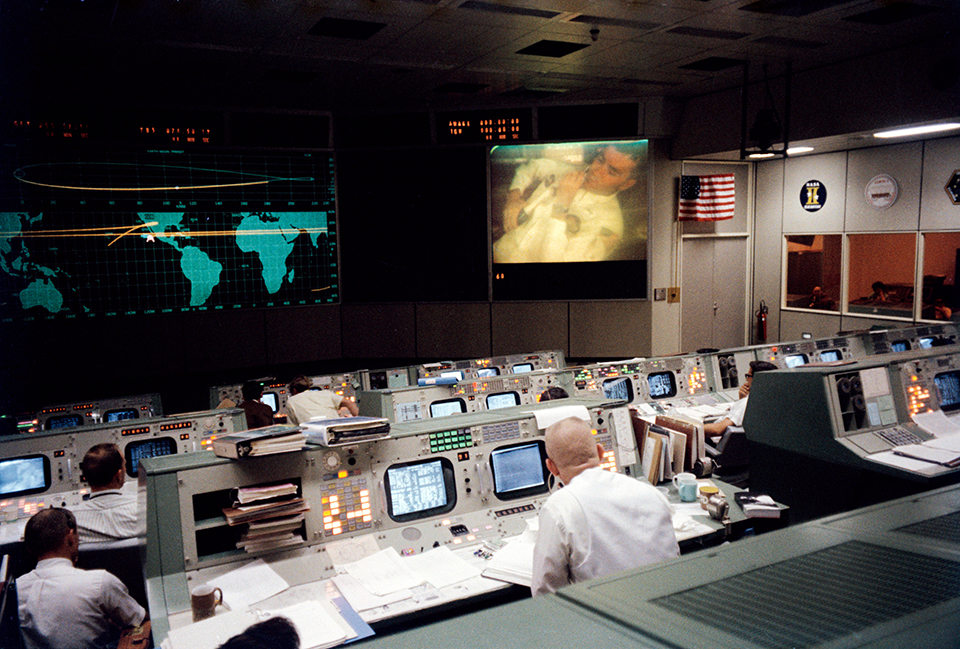Mission Control to Undergo Restoration
December 22, 2016 - The Mission Control room used to direct all flights for the Apollo program is set to undergo a restoration before the 50th anniversary of Apollo 11’s historic first moon landing, which will take place in 2019.
NASA legend Gene Kranz, EAA Lifetime 429257, who visited EAA on December 16, said Johnson Space Center only recently started listening to calls for the revival of Mission Control, which was designated a National Historic Landmark by the National Park Service in 1985.
“For two prior occasions they’ve tried to get Johnson Space Center to step up to the restoration,” Kranz said. “So about two and a half years ago myself and the Apollo generation decided we’d force this issue.”
Since this landmark facility, which was also used for Gemini, Skylab, and Soyuz missions, went out of service 20 years ago, thousands of people walk through its storied space every year as part of a tour given by the Houston visitor center.
“People go up and sit at consoles and flip switches, all this kind of stuff,” Kranz said. “Over the years the carpet’s worn. It’s held together with yellow duct tape. Many of the things in Mission Control that were there are gone. Modules are missing. … [People] have torn off pieces from a shelf in back that reporters used to stand over and write on.”
Space Center Houston is now gathering donations in order to return Mission Control to its original condition. Kranz said in the meantime he and other NASA veterans have been assisting the National Park Service in identifying missing artifacts not only in the Mission Operations Control Room, but also in the viewing and training rooms.
“The Mission Control restoration is very important to me,” he said. “I believe it represents the work of a generation of young people who were willing to step into a highly visible, hazardous, and time-critical role in space flight and accept the responsibility for actions needed for crew safety and mission success. If we failed in Mission Control we would be the survivors … and be publicly held forever accountable for our actions.”
Although there are tributes to the astronauts who made history in space all across the United States, few monuments stand to honor those who spent decades helping control both manned and unmanned missions from their consoles in the control room.
“Nothing covers the emergency landing in the Western Pacific on Gemini 8, or the lightning strike decisions for Apollo 12, or saving the Apollo 14 mission with an emergency software patch the crew implemented during the descent,” Kranz said. “Mission Control is the only place that tells the story of the controllers, there is no other.”

